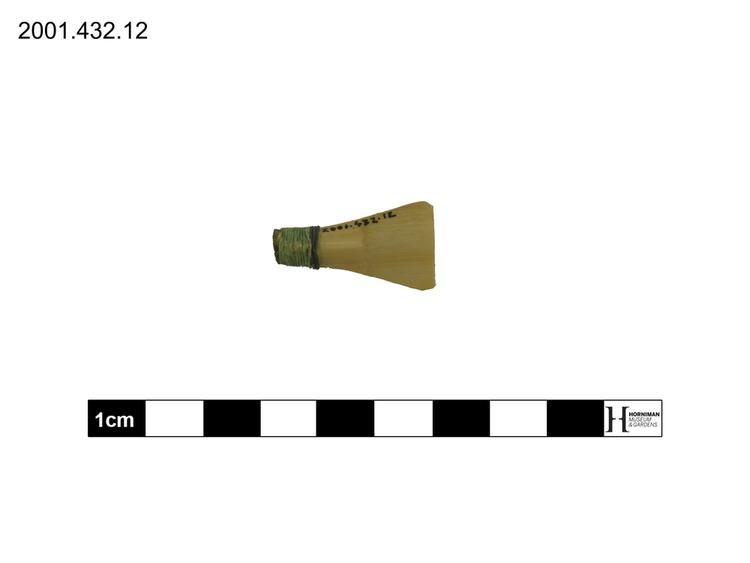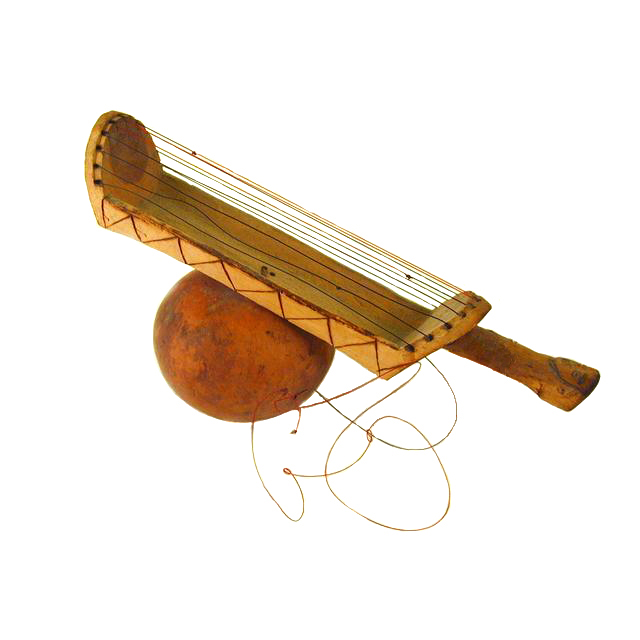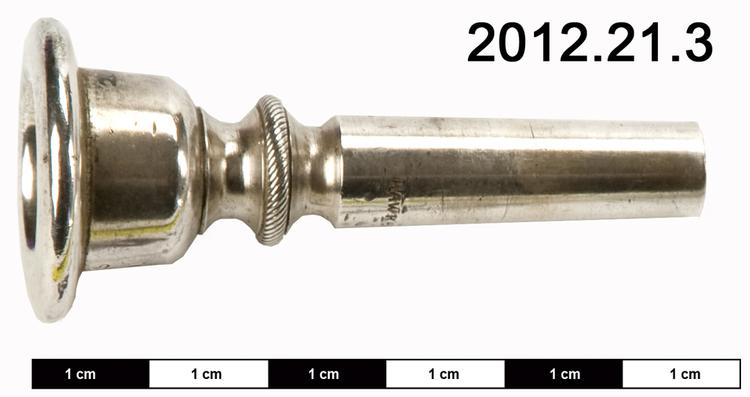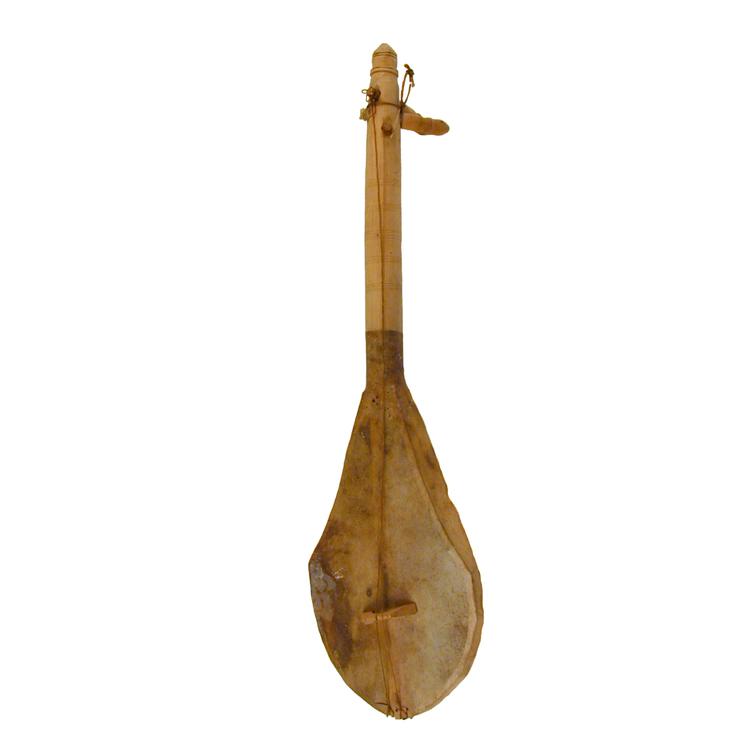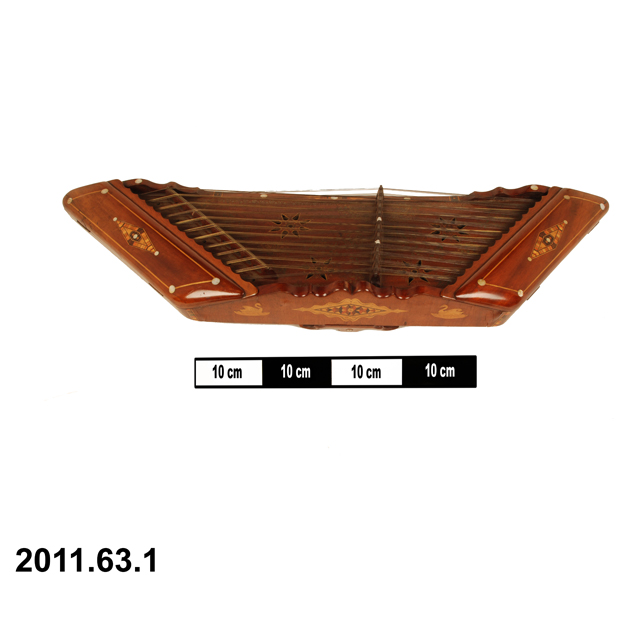
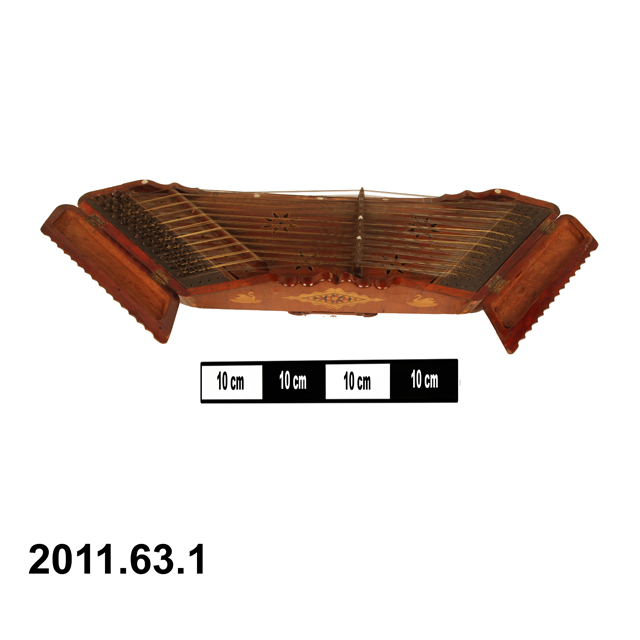
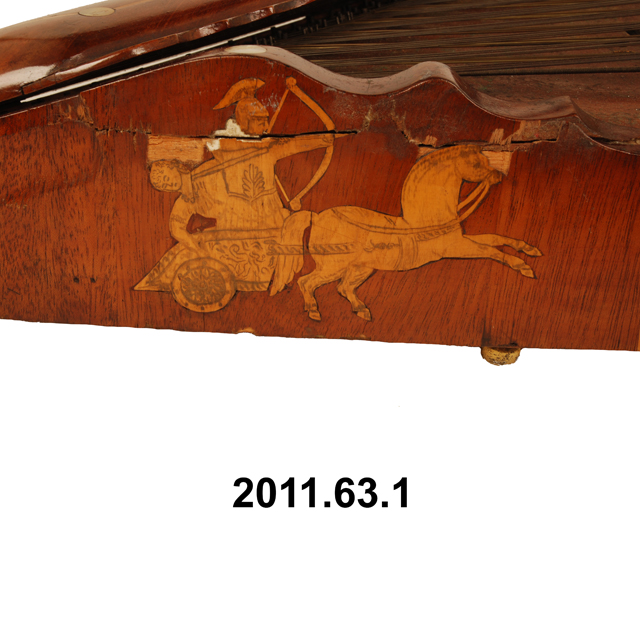
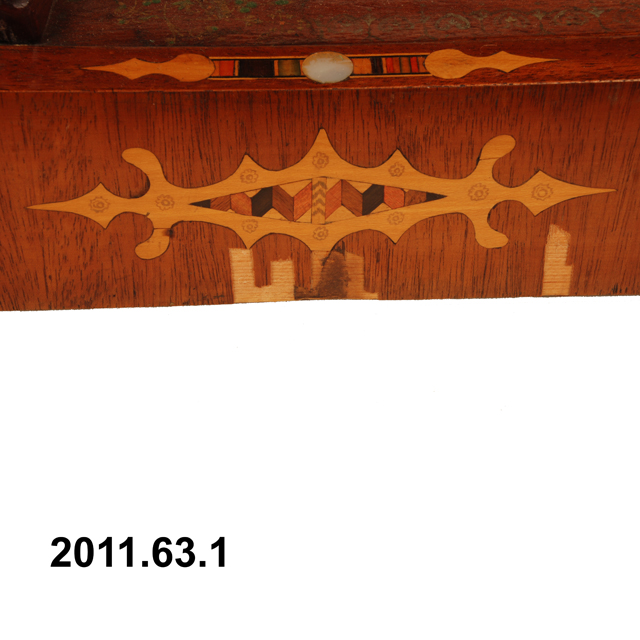
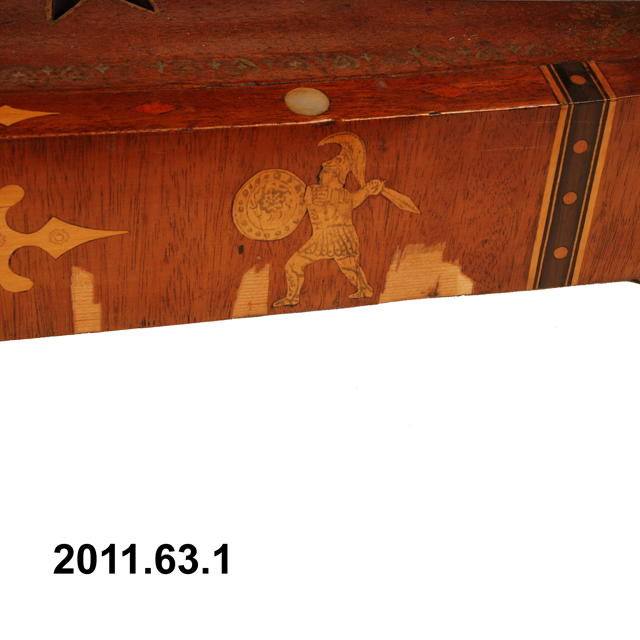
Thomas Henry Walker made this dulcimer in Smallheath in Birmingham. This trapezoid instrument is made of wood covered with veneer, with inlaid decoration in a design of Roman warriors and swans. The hitch pins and wrest pins are concealed by two hinged lids. The instrument is strung with 12 treble and 11 bass strings. There are 4 strings on each treble course and 3 on the bass, apart the lowest bass one which is a single wire-wound string. There are 4 holes for a further (presumably treble) course at the top but these are unused as they are too high up. The soundboard has 4 soundhole designs outlined in gold paint. The instrument would probably have been tuned in the traditional Birmingham style. The treble would have been as follows: right hand side of the bridge C# (above middle C), D, E, F#, G, A, B, C, D, E, F, G. The left hand side of the treble bridge would be a fifth higher. The bass bridge would have been probably a low G on the wound bass, then all the notes an octave below the corresponding treble (the bass string above the treble one), i.e. D, E F, etc. At the back of the instrument is a table stand on which the instrument rested while being played. A short pole would have been inserted in a hole in this stand to raise the back of the instrument up higher. The damage which can be seen to the left hand side of the front rail is likely to be as a result of movement causing the veneer to crack. The front veneer is also damaged.
Thomas Henry Walker was a wire drawer who worked at Latch & Batchelor in Birmingham. Its related firm of Webster & Horsfall, based on the same site, produced a wide variety of wire, including piano wire. Several generations of their workers and other local makers used this wire to string dulcimers. Thomas Henry Walker made the dulcimer for his eldest son, also named Thomas Henry Walker (born 1883 – died circa 1970). This dulcimer was first played in public by Tom junior, aged 12, in Birmingham Town Hall in 1895. Mrs May Findon, the maker’s granddaughter, donated the dulcimer to the Horniman Museum. It was one of four instruments made by her grandfather. In 2005, her reminiscences of the dulcimer and its players were recorded in an interview, where she recalled it being played for parties at her grandfather’s house.



